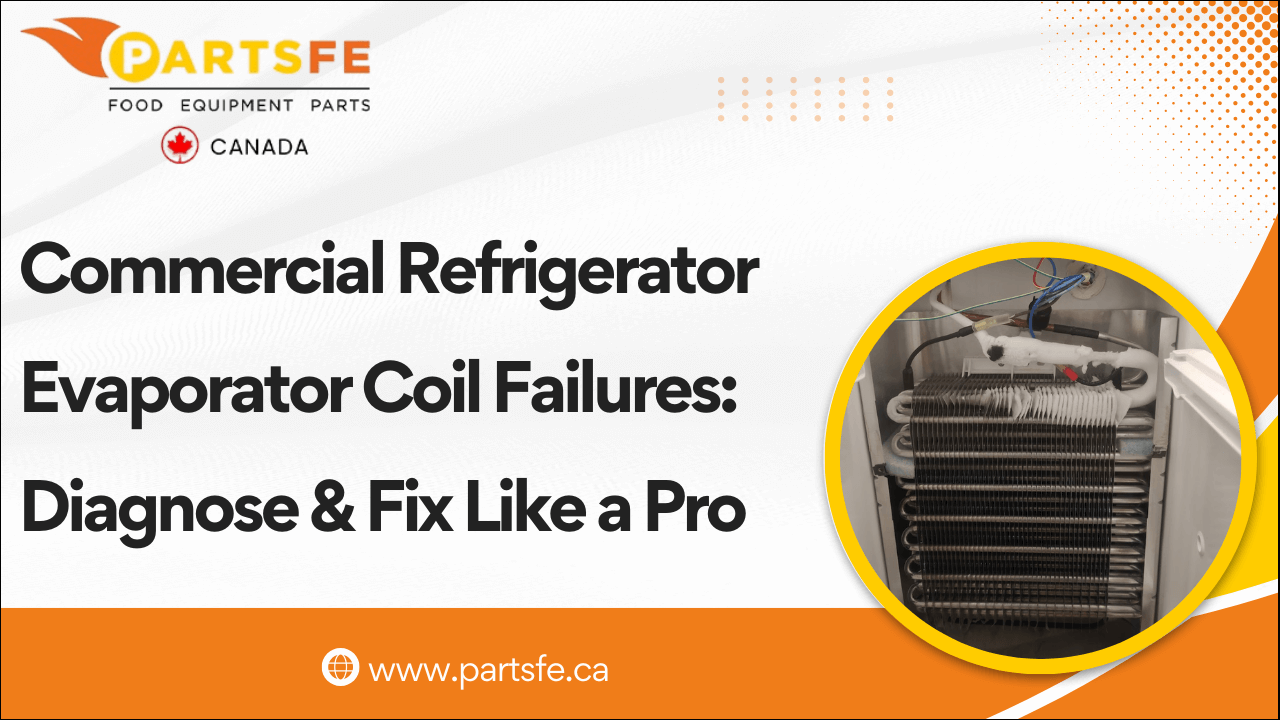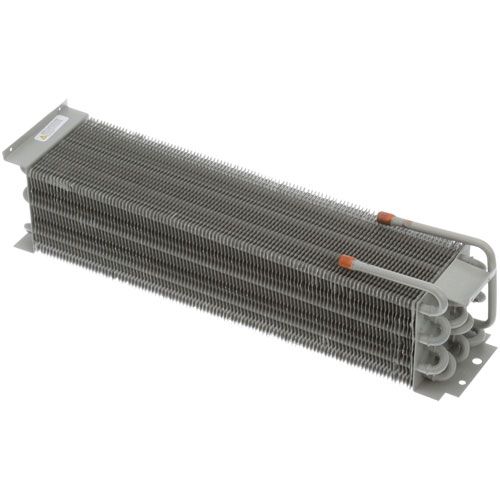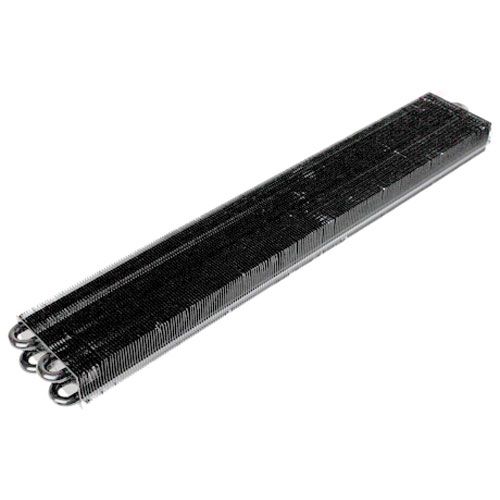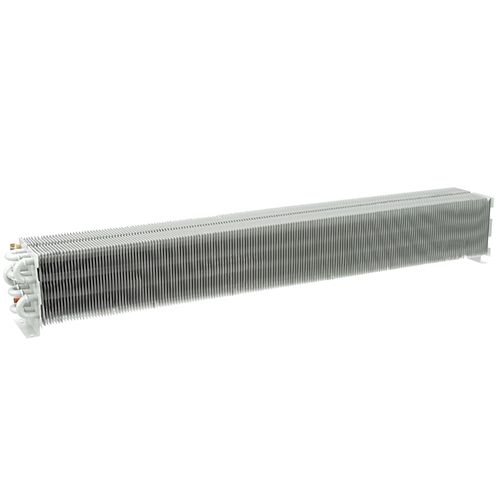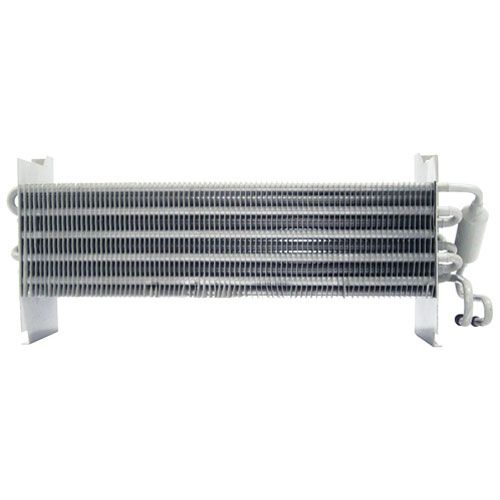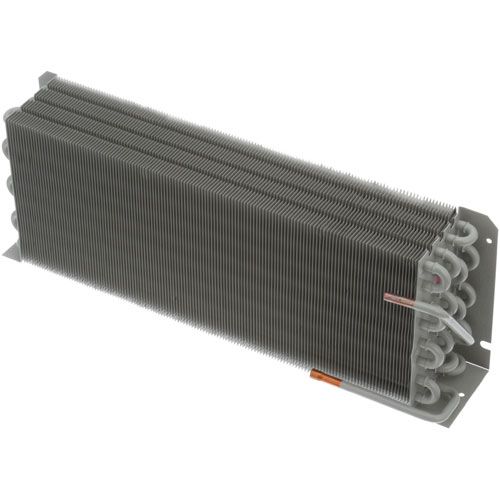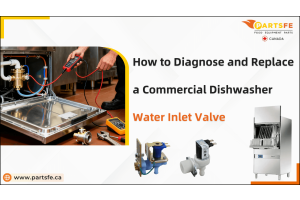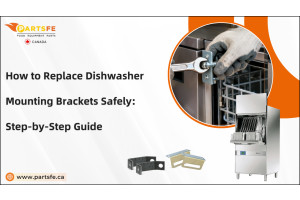Commercial Refrigerator Evaporator Coil Failures: Diagnose & Fix Like a Pro
Commercial refrigerators are essential for businesses that rely on cold storage, such as restaurants, grocery stores, medical facilities, and commercial kitchens. One of the most critical components in these systems is the evaporator coil. When it fails, it can lead to temperature inconsistencies, spoiled inventory, and costly repairs. Understanding how to diagnose and fix evaporator coil failures is crucial for maintaining efficiency and preventing downtime. In this guide, we'll walk you through the common signs of refrigerator evaporator coil problems, what causes them, and how to troubleshoot and repair them like a pro. Whether you're a technician, kitchen staff, or a business owner, this knowledge can save you time, money, and frustration by keeping your refrigeration units running smoothly.
Understanding the Role of Evaporator Coils in Commercial Refrigerators
Evaporator coils in commercial refrigerators play a crucial role, particularly in active kitchens and food storage environments. They absorb heat from inside the unit through refrigerant circulation, maintaining safe and stable temperatures for food. When functioning properly, these coils help save energy and prevent food spoilage.
Key Functions of Evaporator Coils:
-
Heat Absorption: The refrigerator's interior is effectively cooled by the evaporator coil's absorption of heat from the heated air inside.
-
Air circulation: It prevents temperature swings and hot patches by distributing cold air evenly in conjunction with fans.
-
Humidity Control: The coil reduces moisture buildup inside the unit, helping to minimize frost and keep food fresh longer.
-
Maintaining Temperature: It keeps the internal temperature stable, ensuring consistent cooling that protects perishable items.
-
System Efficiency: A clean, functioning coil supports the refrigeration cycle, reducing energy consumption and costly repairs.
Regular maintenance prevents dirt and frost buildup that reduces cooling efficiency. Knowing the coil’s role helps catch problems early and avoid costly breakdowns.
Need reliable parts for commercial refrigerator coil repairs? PartsFeCA offers quality evaporator coils, condenser fans, and thermostats from top brands like Hoshizaki, Randell, and Blodgett. Shop now for fast delivery and trusted performance.
Common Signs of Evaporator Coil Failure in Commercial Refrigerator
Recognizing the warning signs of evaporator coil refrigerator failure early can prevent expensive repairs and unexpected downtime. Timely identification is crucial for keeping commercial kitchen refrigeration systems running smoothly.
Signs of Evaporator Coil Failure:
-
Excessive Frost or Ice Build-Up: Commercial refrigeration evaporator coil freezing up indicates frost buildup that blocks airflow and lowers cooling efficiency.
-
Unstable Temperatures: The refrigerator struggles to maintain a consistent cold temperature, leading to faster food spoilage.
-
Overworking Compressor: The compressor runs continuously or overheats because the coil isn’t absorbing heat effectively.
-
Strange Noises: Clicking, hissing, or rattling sounds near the coil may indicate refrigerant leaks or mechanical issues.
-
Water Leaks Inside: Melting frost causes water to drip or pool inside the unit or on the floor beneath it.
-
Reduced Airflow: Weak or uneven air circulation inside the fridge, often caused by dirt or blockages on the coil.
Identifying these signs promptly can help avoid significant failures and expensive repairs, ensuring your commercial refrigeration system stays dependable.
What Causes Commercial Refrigerator Evaporator Coil Failures?
Commercial refrigerator evaporator coils are designed for durability, but several real-world factors often lead to their failure if not addressed quickly. Recognizing these causes can help avoid costly downtime and repairs in busy commercial kitchens. Common causes of evaporator coil failure include:
-
Formicary Corrosion: Occurs when moisture, air, and acidic substances, often from cleaning chemicals, react with copper tubing, causing tiny pinhole leaks over time.
-
High Humidity and Moisture Exposure: Persistent humidity in kitchens or walk-ins accelerates corrosion and promotes ice formation on coils.
-
Improper Coil Cleaning Practices: Using harsh or incorrect cleaning chemicals can erode the coil material, leading to long-term damage and leaks.
-
Poor Installation Practices: Coils that are not correctly supported or aligned may vibrate excessively or stress connections, leading to premature failure.
-
Use of Incompatible Refrigerants or Oils: Mixing refrigerants or using the wrong lubricant can degrade internal surfaces and clog the coil.
-
Lack of Scheduled Preventive Maintenance: Neglecting regular inspection and servicing allows small issues like minor leaks or debris buildup to turn into major failures.
-
Voltage Fluctuations or Electrical Surges: Irregular power supply can damage fan motors or control boards, indirectly affecting coil performance.
Regular inspections, cleaning, and timely repairs are essential to prevent these issues and keep your commercial refrigeration system running efficiently.
Step-by-Step Troubleshooting of Faulty Evaporator Coils in Commercial Refrigerators
A faulty evaporator coil can disrupt refrigeration and lead to costly product loss. Follow these step-by-step troubleshooting tips to identify issues early and restore proper function.
Step 1: Check the Internal Temperature Readings
Use a thermometer to confirm if the unit is maintaining the correct temperature. If not, change the monitor and thermostat. Proceed to the next step if the problem continues.
Step 2: Visually Inspect the Coil for Ice or Frost Buildup
To fix an evaporator coil in frozen refrigerator, defrost the unit fully, then inspect and test the defrost timer, heater, and thermostat. Restoring proper airflow and defrost function prevents future freezing.
Step 3: Ensure the Evaporator Fan is Functioning
Open the evaporator cover and confirm the fan is spinning when the door switch is pressed. If it's not, test the motor and replace it if necessary.
Step 4: Listen for Signs of Leaks or Pressure Issues
If you hear hissing or bubbling, shut down the unit and inspect refrigerant lines. Call a certified technician to locate and repair any leaks.
Step 5: Check the Refrigerant Charge
Use pressure gauges to verify refrigerant levels are within the manufacturer's specifications. If low, have a licensed technician recharge the system and fix the leak source.
Step 6: Examine the Coil for Physical or Chemical Damage
Clean the coil using a non-corrosive cleaner. If corrosion or pinhole leaks are visible, replace the coil entirely to restore performance.
Step 7: Test Electrical Components and Controls
Use a multimeter to check voltage across fan motors, defrost heaters, sensors, and control boards. Tighten loose connections or replace malfunctioning parts.
Pro Tip: Before working on coils or electrical components, always turn off the power. Keep coils clean and perform preventive maintenance regularly to reduce the risk of failure and extend your unit’s lifespan.
Check out our guide on troubleshooting True refrigerator common problems to help you identify issues and perform effective repairs with ease.
DIY Solutions to Fix Minor Evaporator Coil Problems in Commercial Refrigerators
Many evaporator coil issues can be handled without calling a technician. With some basic tools and know-how, you can troubleshoot and fix minor issues to keep your commercial refrigerator operating efficiently.
Light Frost Buildup on Coils
This happens when the defrost system isn’t working properly or warm, moist air enters the unit.
Signs: Thin frost on the evaporator coils, uneven cooling inside the refrigerator, or longer compressor runtimes.
Solution: Power off the unit to allow the frost to melt completely. After defrosting, check the defrost timer, heater, and thermostat, and inspect door seals for damage to prevent future frost buildup.
Dirty or Greasy Evaporator Coils
Dust, grease, and grime accumulate on coils, reducing their ability to absorb heat.
Signs: Poor temperature control, longer cooling cycles, and visible dirt on coil surfaces.
Solution: Before cleaning, always switch off the electricity. Make coil cleaning a regular practice every few months and gently remove dirt and grease with a soft brush or coil cleaner.
Weak Airflow Over Coils
Blockages or a failing evaporator fan restrict airflow, causing uneven cooling.
Signs: Warm spots inside the fridge, reduced air circulation, and a noisy or non-functioning fan.
Solution: Clear any obstructions near the fan or vents and make sure the fan blades spin freely without resistance. If the fan motor is damaged or silent, replace it promptly to restore proper airflow.
These simple, practical DIY solutions can prevent minor coil issues from escalating, helping your commercial refrigerator maintain consistent cooling and efficiency.
When to Replace the Refrigerator Evaporator Coil
The evaporator coil is vital for maintaining optimal cooling in commercial refrigerators. You may avoid expensive repairs and equipment failure by knowing when to replace it.
-
Physical Damage: If the coil has cracks or corrosion causing refrigerant leaks, refrigerator evaporator coil leak repair may only provide a temporary fix. In such cases, full replacement is necessary to restore proper function.
-
Recurring Refrigerant Leaks: When leaks persist despite repeated repairs, replacing the coil ensures a long-term fix and prevents ongoing loss of refrigerant.
-
Severe Rust and Buildup: Heavy rust, scale, or mineral deposits that cannot be removed through cleaning significantly reduce coil efficiency and warrant replacement.
-
Continuous Cooling Issues: If the refrigerator continues to struggle with temperature control after servicing fans, defrost systems, and other parts, the coil itself may be failing and need replacement.
-
Frequent Repairs Becoming Costly: For older units, frequent repairs can become costly and inefficient. Considering the refrigerator evaporator coil replacement cost often makes replacement the more economical choice.
Replacing a faulty evaporator coil is key to maintaining refrigeration performance. To assess the coil's condition and determine the best course of action, always get professional counsel.
Preventing Future Coil Failures in Commercial Refrigerators With Routine Maintenance
Regular maintenance helps prevent evaporator coil failures in commercial refrigerators and ensures efficient, long-term operation. Skipping upkeep can lead to breakdowns, food spoilage, and higher energy costs.
-
Clean the Evaporator Coils Regularly: Dust, grease, and debris buildup can block airflow and reduce efficiency. Use a coil cleaner or soft brush every few months.
-
Check for Early Warning Signs: Look for unusual frost, water leaks, or inconsistent temperatures, as these may indicate early coil issues.
-
Inspect the Defrost System and Fans: A faulty defrost cycle can cause ice buildup, while malfunctioning fans restrict airflow, both of which stress the coils.
-
Ensure Proper Airflow: Keep surrounding vents and filters clean to prevent blockages that can lead to coil freezing.
-
Schedule Professional Inspections: Have a technician inspect the system at least twice a year to check refrigerant levels, detect leaks, and evaluate coil condition.
By following these routine steps, you can reduce the risk of coil damage and extend the lifespan of your commercial refrigeration system, protecting both your investment and perishable goods.
Check out this guide on cleaning commercial refrigerator condenser coils to learn effective maintenance tips that keep your system running efficiently.
Conclusion
In busy commercial kitchens, a failing evaporator coil refrigerator can result in food spoilage, increased energy use, and unexpected downtime. Recognizing early warning signs, understanding the root causes, and applying effective troubleshooting methods can help you address issues before they escalate. Consistent maintenance, prompt repairs, and routine professional checkups are essential to avoid major failures and ensure your refrigeration system stays efficient. With proactive care, you can extend the unit’s lifespan and keep cooling performance reliable, even in demanding kitchen environments.
FAQs
Why does my refrigerator evaporator coil keep freezing up?
The evaporator coil may freeze due to a malfunctioning defrost system, dirty coils, or warm air entering through damaged door seals. Excess moisture in the unit turns to frost, eventually building up on the coil and restricting airflow.
Where is the evaporator coil located in a refrigerator?
The evaporator coil is typically located behind the back panel inside the freezer compartment. It’s positioned there to absorb heat and help circulate cold air throughout the unit.
How to check evaporator coils in the refrigerator?
Unplug the unit and remove the panel covering the evaporator coil inside the freezer compartment. Visually inspect the coil for frost buildup, dirt, corrosion, or signs of refrigerant leakage.
How to clean the evaporator coil in the refrigerator?
Turn off the refrigerator and allow the coil to defrost if it’s frozen. Gently clean the coil using a soft brush or coil cleaner, avoiding harsh chemicals that could damage the fins.
How to replace a refrigerator evaporator coil?
Replacing an evaporator coil involves recovering refrigerant, disconnecting the old coil, and installing a new one, followed by vacuuming and recharging the system. This should be done by a certified technician due to refrigerant handling regulations.

